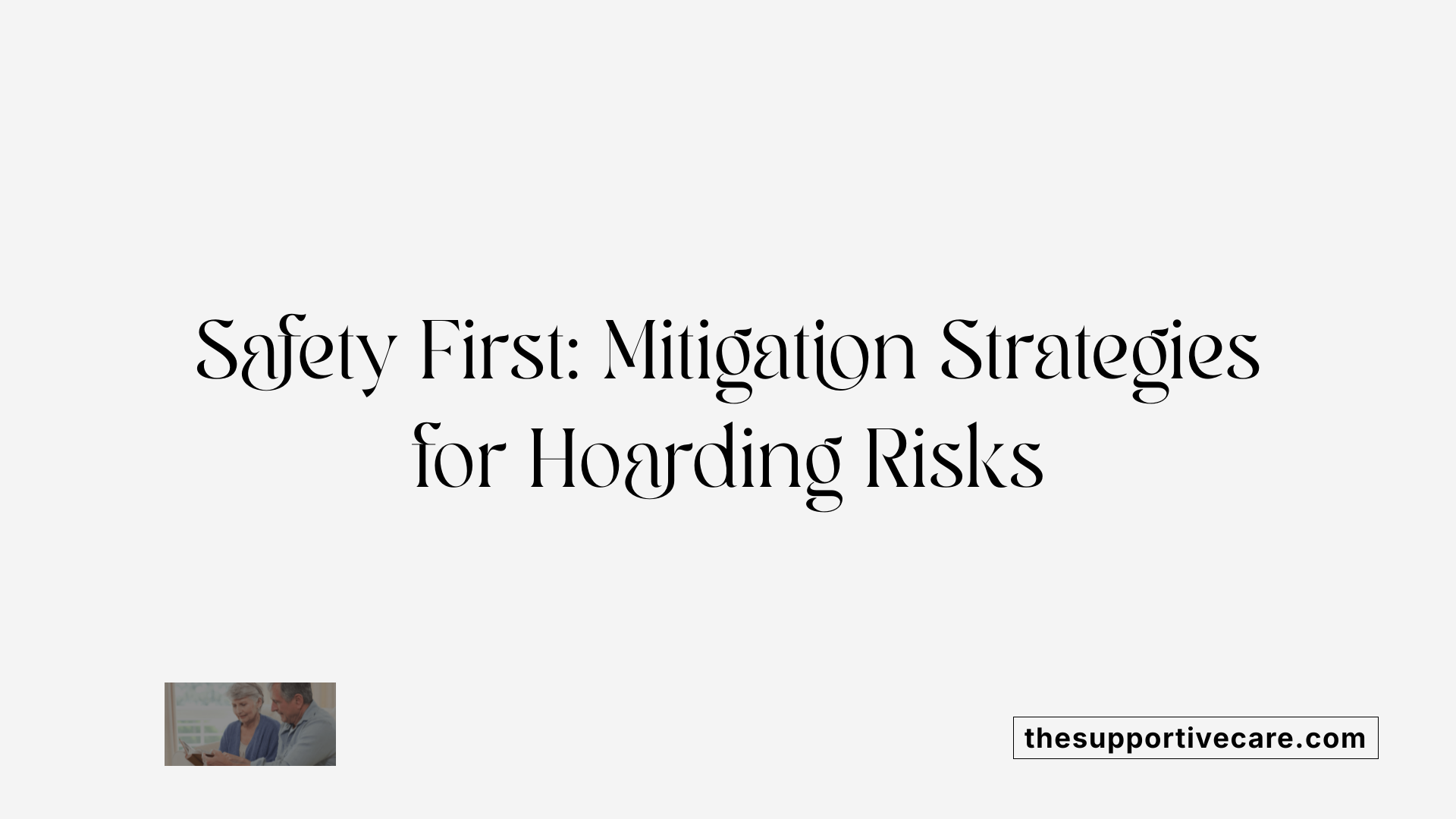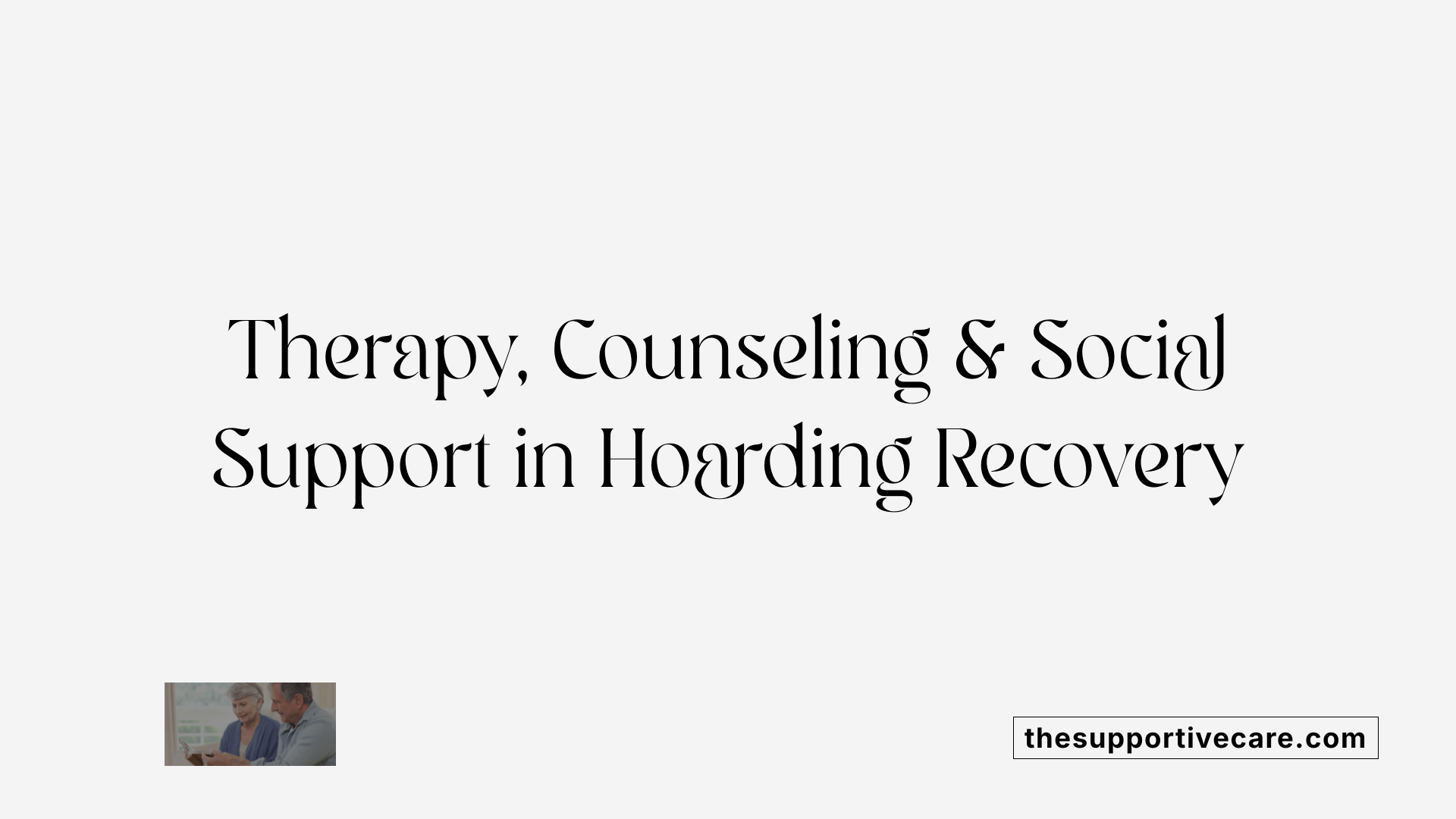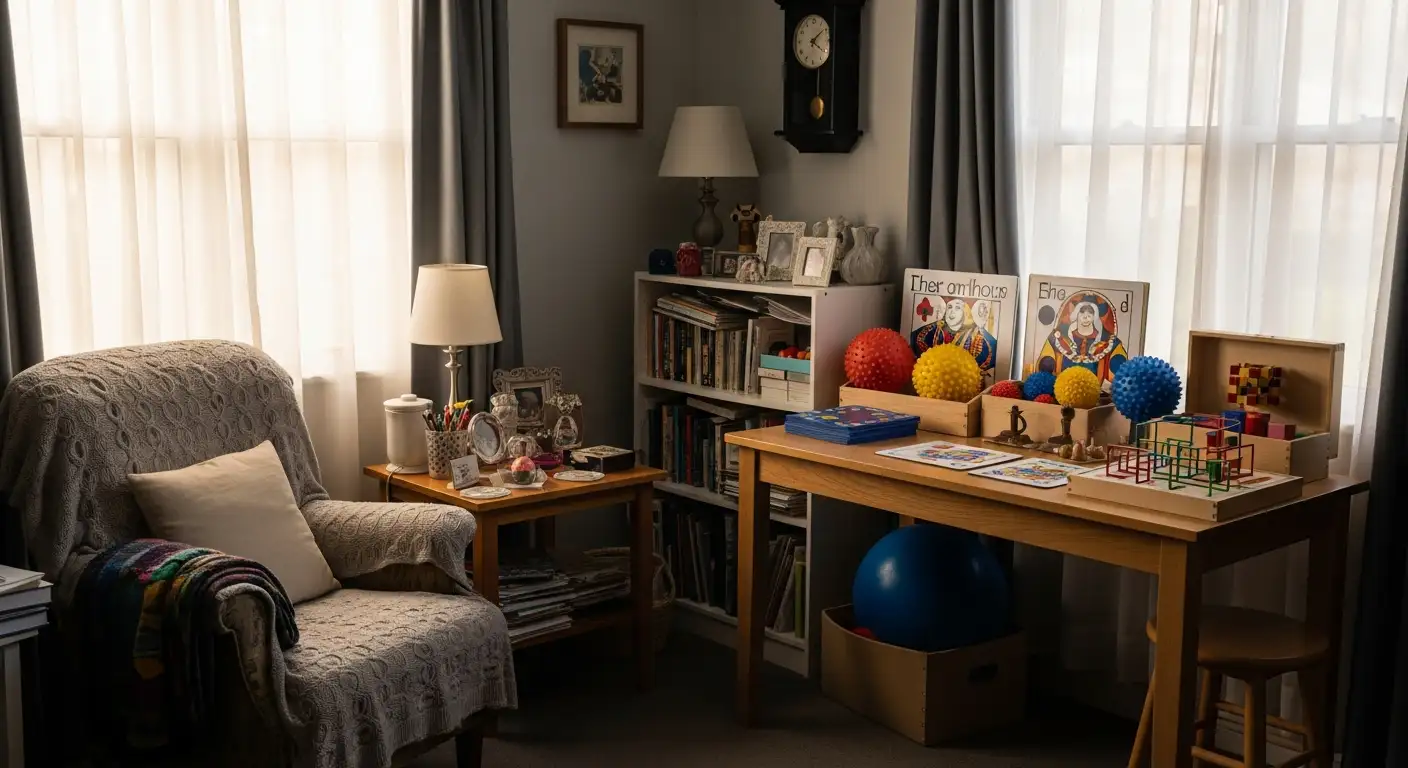A Closer Look at Hoarding Disorder in Seniors
Hoarding disorder is a complex mental health condition that significantly impacts the safety, health, and quality of life of older adults. Recognizing the signs, understanding the causes, and implementing effective support strategies are crucial for caregivers, family members, and professionals involved in elderly care.
Recognizing the Signs, Symptoms, and Triggers of Hoarding in Seniors

What are the common signs, symptoms, and triggers of hoarding behavior in the elderly?
Hoarding in seniors often manifests through distinct signs that can signal the presence of a behavioral disorder requiring attention. Signs include disorganized piles of clutter and excessive accumulation of items that block pathways, cluttered countertops, and storage areas. These conditions can severely restrict movement within the home and pose safety hazards.
Other indicators involve the individual's difficulty in discarding possessions, regardless of their actual value or utility. Seniors may become distressed or emotionally upset at the mere thought of losing their belongings. This attachment is often rooted in emotional reasons such as grief, loneliness, or fear of waste.
Poor home maintenance is another common symptom, leading to unsanitary conditions from accumulated dirt, pests, mold, or expired foods. These environments increase risks of falls, fire hazards, and health issues.
The triggers for hoarding behavior can be diverse. Emotional triggers like experiencing the loss of a loved one, social isolation, or stressful life changes can intensify hoarding tendencies. Additionally, cognitive impairments such as dementia or Alzheimer's disease impair decision-making and organizational skills, further contributing to cluttered homes.
Recognizing these signs and understanding the triggers involved are crucial steps in early intervention. Effective support often combines therapy, mental health care, and tailored support strategies to improve safety and quality of life for seniors with hoarding behaviors.
Causes and Mental Health Factors Associated with Senior Hoarding

What causes hoarding disorder in seniors, and what mental health factors are associated with it?
Hoarding disorder in seniors is driven by a mix of emotional, cognitive, and mental health factors. Many seniors develop strong emotional attachments to their possessions, often viewing items as sources of comfort, sentimental reminders, or even as security against loss. These attachments can be so intense that discarding items triggers anxiety or distress.
Cognitive impairments play a significant role as well. Conditions like dementia, including Alzheimer's disease, impair decision-making, organization, and judgment skills, making it harder for seniors to manage their belongings and discern what is necessary.
Mental health issues frequently associated with hoarding include depression, anxiety, obsessive-compulsive disorder (OCD), and attention-deficit/hyperactivity disorder (ADHD). These conditions can contribute to indecisiveness, perfectionism, and procrastination, all of which reinforce hoarding behaviors. Seniors with such mental health challenges may find it overwhelming to sort through possessions or may fear losing important or useful items.
Life events like the loss of a spouse or traumatic experiences can also activate or worsen hoarding tendencies. The grief and loneliness often experienced in later life lead some seniors to cling more tightly to their possessions for emotional comfort.
Family history of hoarding and social isolation are additional factors influencing the development of hoarding disorder. A history of similar behaviors within a family increases vulnerability, and social isolation can exacerbate these tendencies because of limited external support and intervention.
Addressing senior hoarding effectively requires understanding these underlying causes. Therapeutic approaches, particularly cognitive-behavioral therapy (CBT), aim to challenge and reshape the thoughts fueling hoarding behaviors. Providing social support and addressing emotional health are crucial elements to reduce risks, improve living conditions, and help seniors lead safer, healthier lives.
Safety Considerations and Risk Mitigation for Hoarding in Seniors

What safety considerations and risk mitigation strategies are important for seniors with hoarding disorder?
For seniors affected by hoarding disorder, ensuring safety in their living environment is vital due to the numerous hazards posed by excessive clutter. Cluttered homes significantly increase the risk of falls, which can lead to serious injuries, especially in older adults already vulnerable to mobility issues.
Fire safety is a major concern, as accumulated papers, fabrics, and other combustible materials can quickly become fire hazards. Blocked exits and pathways hinder quick evacuation during emergencies, and malfunctioning or absent smoke detectors compound these risks.
Sanitary risks also escalate with hoarding. Accumulated trash and expired or unsanitary items can foster pests, spread illness, and create unsanitary conditions that negatively impact health.
Risk mitigation often requires a multi-faceted approach. Collaboration between emergency services, social workers, and mental health professionals ensures comprehensive assessment and intervention. These teams evaluate the hazards, prioritize safety, and help develop personalized plans that respect the senior’s emotional attachment to possessions.
Gradual decluttering, rather than sudden clean-outs, is recommended. This process should be managed with patience and emotional support, often with professional organizers or therapists experienced in hoarding behaviors.
Safety improvements, like installing working smoke detectors, keeping pathways clear, and securing hazardous materials, play a crucial role in reducing immediate dangers. Regular safety checks and modifications help maintain a safer home environment.
Long-term safety also involves ongoing mental health care and social engagement efforts. Addressing underlying emotional issues, such as grief, anxiety, or depression, helps reduce the compulsive need to acquire or hoard possessions, supporting sustained safety and wellbeing.
Community Resources and Support Systems Available for Seniors
 There are various community resources, professional support options, and programs designed to assist seniors facing hoarding disorder. National organizations such as the International OCD Foundation and the Anxiety Disorders Association of America provide valuable educational materials, directories of qualified therapists, treatment programs, and peer support groups. These organizations serve as vital starting points for families seeking guidance and professional help.
There are various community resources, professional support options, and programs designed to assist seniors facing hoarding disorder. National organizations such as the International OCD Foundation and the Anxiety Disorders Association of America provide valuable educational materials, directories of qualified therapists, treatment programs, and peer support groups. These organizations serve as vital starting points for families seeking guidance and professional help.
Regionally, initiatives like the Boston Hoarding Task Force and the Cape Cod Hoarding Response Team work directly within communities to offer tailored support. They facilitate case discussions, coordinate interventions, and educate residents about hoarding risks and management strategies.
Specialized home care services are also available, focusing on clutter management and safety. These professional organizers and cleanup providers are often listed in national directories, and they have expertise in handling hazardous materials safely while respecting emotional attachments to possessions.
Support groups such as Clutterers Anonymous and Fight the Blight help reduce stigma and social isolation. Programs like 'Buried in Treasures' utilize cognitive behavioral therapy techniques and foster peer support, empowering seniors to manage their hoarding behaviors gradually.
Legal and social services play a crucial role by assisting with decluttering, ensuring safety standards, and navigating legal issues related to property and safety regulation. Overall, combining these resources creates a comprehensive network that supports seniors in maintaining a safer, healthier living environment and improving their well-being.
Effective Strategies and Treatment Options for Managing Hoarding in Seniors

What are effective intervention strategies and treatment options for seniors with hoarding disorder?
Managing hoarding in seniors requires a compassionate, structured approach. One of the most effective strategies is cognitive-behavioral therapy (CBT). This type of therapy helps seniors understand and modify their thought patterns about possessions, decision-making, and attachment to clutter. Techniques such as sorting items, setting small goals, and challenging beliefs about wastefulness and utility are integral parts of CBT.
Group therapy and peer support programs also play a crucial role. These environments offer social connection, shared experiences, and encouragement, which can improve motivation and reduce social isolation.
Medications like selective serotonin reuptake inhibitors (SSRIs) and serotonin-norepinephrine reuptake inhibitors (SNRIs), such as venlafaxine, can aid when hoarding coexists with conditions like depression or anxiety. They are most effective when combined with therapy.
Emerging therapies include virtual reality (VR) tools, which provide safe simulation environments for practicing decluttering and decision-making skills. Mindfulness techniques, such as meditation and breathing exercises, can help reduce emotional distress associated with discarding possessions.
Support approaches are often tailored to the individual's motivation. Some may benefit from intensive outpatient programs or home-based interventions that respect their pace and comfort level. The focus is on harm reduction—aiming to improve safety and cleanliness gradually—rather than complete clearance, which can be overwhelming.
To build organizational skills, caregivers and professionals often guide seniors through sorting items into categories (keep, discard, donate), establishing routines, and setting achievable goals. This structured approach encourages gradual change, fostering independence while ensuring safety standards are met.
| Intervention Type | Description | Typical Settings |
|---|---|---|
| Cognitive-Behavioral Therapy (CBT) | Addressing thought patterns, decision-making, and motivation | In-person clinics, online platforms, home-based |
| Group Therapy & Peer Support | Sharing experiences, social reinforcement | Community centers, support groups |
| Pharmacotherapy (SSRIs/SNRIs) | Managing comorbid depression or anxiety | Medical offices, clinics |
| Virtual Reality & Mindfulness | Safe practice in decluttering and emotional regulation | Specialized clinics, research settings |
| Tailored Programs | Based on motivation, includes outpatient and home visits | Homes, outpatient clinics |
Understanding the mental health foundation of hoarding is successful when treatments are multifaceted, patient-centered, and delivered with patience and empathy.
Building Supportive Environments and Promoting Independence

How can caregivers build supportive environments and promote independence in seniors with hoarding disorder?
Supporting seniors living with hoarding disorder requires a thoughtful approach rooted in patience, compassion, and respect for their personal choices. Caregivers should recognize that hoarding is often linked to emotional attachments, mental health issues, and cognitive challenges, which all demand understanding rather than judgment.
An effective strategy involves focusing on harm reduction rather than demanding complete clearance of possessions. This means helping to minimize safety hazards, such as fire risks or fallen objects, without forcing the individual to dispose of all their belongings. Small, manageable changes—like clearing a walkway or organizing a single shelf—can make a significant impact and help build confidence.
Building trust is fundamental. Caregivers should actively listen to the senior’s concerns, acknowledge their feelings, and involve them in decision-making processes. Setting realistic goals together ensures that the senior feels a sense of control, which is crucial for long-term success.
Supporting mental health through therapy and medication, when appropriate, can help address underlying issues such as depression, anxiety, or obsessive-compulsive tendencies. Professional counseling offers coping skills and emotional support, empowering seniors to manage their behaviors better.
Creating a safe, manageable living space often requires expert assistance in organizing belongings and gradually decluttering. This process should be slow and collaborative, emphasizing the individual’s right to live in comfort and independence.
Finally, encouraging small, achievable steps and celebrating successes along the way fosters confidence and motivation. By respecting autonomy and providing consistent support, caregivers can help seniors maintain their independence while improving their living conditions, ultimately enhancing their safety and quality of life.
The Role of Therapy, Counseling, and Social Support in Recovery

What are the key support mechanisms vital for managing hoarding behaviors in seniors?
Supporting seniors with hoarding disorder involves several interconnected strategies. Encouragement to participate in mental health therapy, particularly cognitive-behavioral therapy (CBT), is fundamental. CBT helps individuals understand and challenge the thoughts and beliefs that contribute to their hoarding behavior, while also developing healthier decision-making habits.
Joining peer support groups like Clutterers Anonymous offers a crucial social outlet. These groups provide a sense of community, reduce feelings of loneliness, and allow seniors to learn from others facing similar challenges.
Addressing emotional attachments, grief, and trauma is an essential component of recovery. Many seniors hoard as a way to cope with loss, loneliness, or traumatic experiences from their past. Providing counseling to work through unresolved issues can lessen the emotional grip of possessions.
Reducing social isolation through community engagement fosters a supportive environment where seniors feel connected and valued. Participating in group activities, community centers, or volunteer opportunities can improve overall mental health.
Ongoing support and education are vital for maintaining progress. Caregivers and family members, equipped with proper knowledge about hoarding, can better assist seniors in managing their environments. Support networks also help sustain motivation and resilience.
In essence, a comprehensive approach combining therapy, peer support, emotional healing, community involvement, and continuous education creates the best foundation for managing hoarding behaviors effectively. Patience, empathy, and consistent encouragement form the core of successful recovery efforts.
Towards Safer, Healthier Living Spaces for Seniors
Supporting seniors with hoarding disorder requires a compassionate, multifaceted approach focused on safety, mental health, and preserving independence. Early recognition, community resources, tailored interventions, and ongoing emotional support are essential components in helping seniors achieve safer, more manageable living environments and improved quality of life.
References
- How Can You Help Seniors With Hoarding Problems?
- 7 Ways to Deal With Seniors With a Hoarding Disorder
- For seniors with hoarding disorder, a support group helps ... - NPR
- Helping someone who hoards | Mental health problems - Mind
- Treating Hoarding Behavior in Older Adults: A Guide for Caregivers ...
- How to Help Someone You Love with a Hoarding Disorder
- Helping Someone with Hoarding Disorder - HelpGuide.org
- How to Help a Loved One With a Hoarding Disorder - Bio-One
- Helping a Senior Who Hoards Downsize - Windward Life Care



































































































